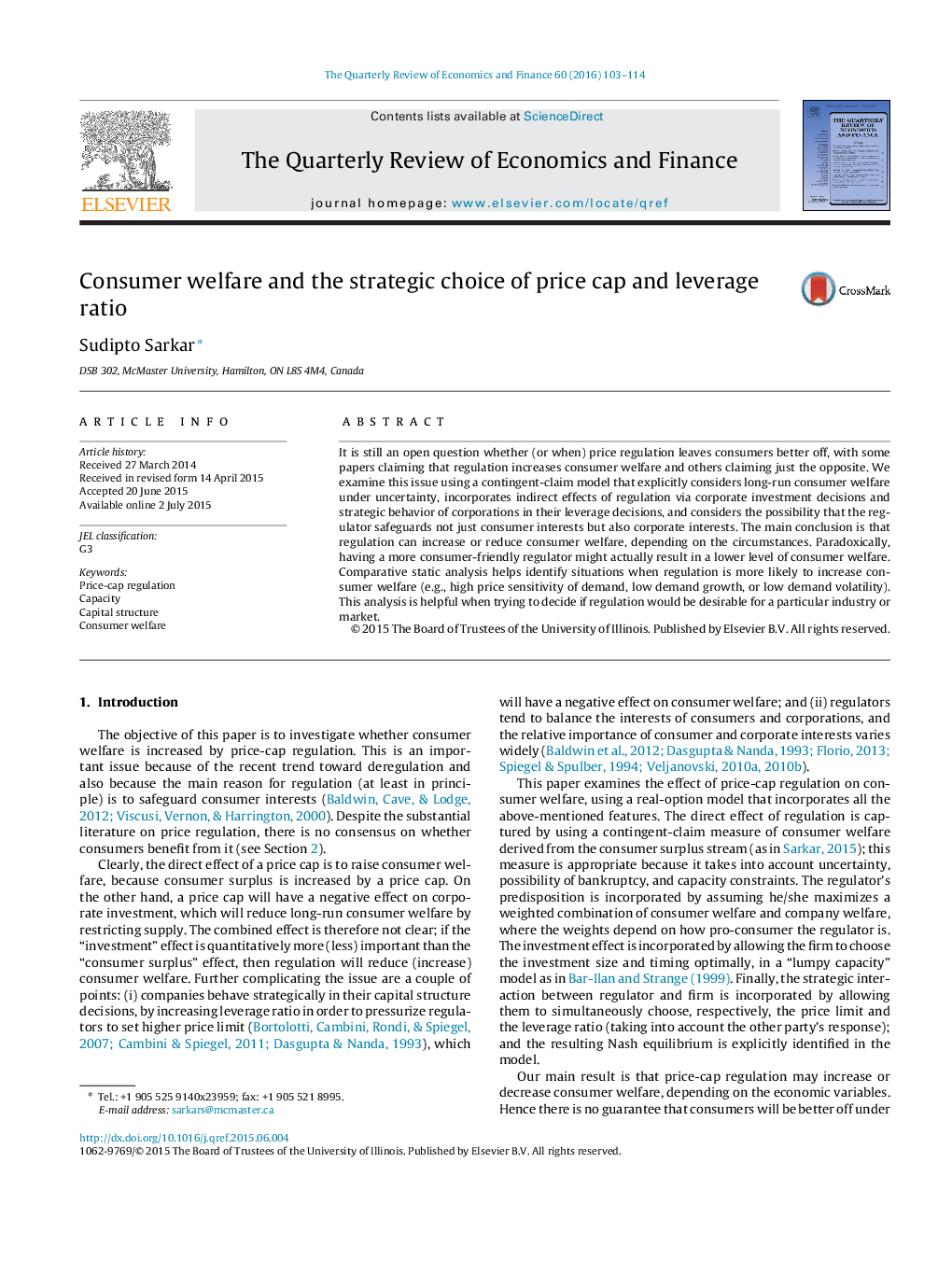| کد مقاله | کد نشریه | سال انتشار | مقاله انگلیسی | نسخه تمام متن |
|---|---|---|---|---|
| 980345 | 1480440 | 2016 | 12 صفحه PDF | دانلود رایگان |
• We examine the effect of price-cap regulation on consumer welfare.
• Corporate investment and leverage decisions are incorporated in the model.
• We show that price-cap regulation can increase or reduce consumer welfare.
• A more consumer-friendly regulator might result in lower consumer welfare.
• We identify conditions when regulation is likely to increase consumer welfare.
It is still an open question whether (or when) price regulation leaves consumers better off, with some papers claiming that regulation increases consumer welfare and others claiming just the opposite. We examine this issue using a contingent-claim model that explicitly considers long-run consumer welfare under uncertainty, incorporates indirect effects of regulation via corporate investment decisions and strategic behavior of corporations in their leverage decisions, and considers the possibility that the regulator safeguards not just consumer interests but also corporate interests. The main conclusion is that regulation can increase or reduce consumer welfare, depending on the circumstances. Paradoxically, having a more consumer-friendly regulator might actually result in a lower level of consumer welfare. Comparative static analysis helps identify situations when regulation is more likely to increase consumer welfare (e.g., high price sensitivity of demand, low demand growth, or low demand volatility). This analysis is helpful when trying to decide if regulation would be desirable for a particular industry or market.
Journal: The Quarterly Review of Economics and Finance - Volume 60, May 2016, Pages 103–114
